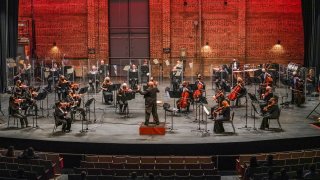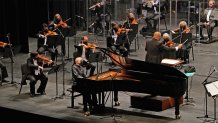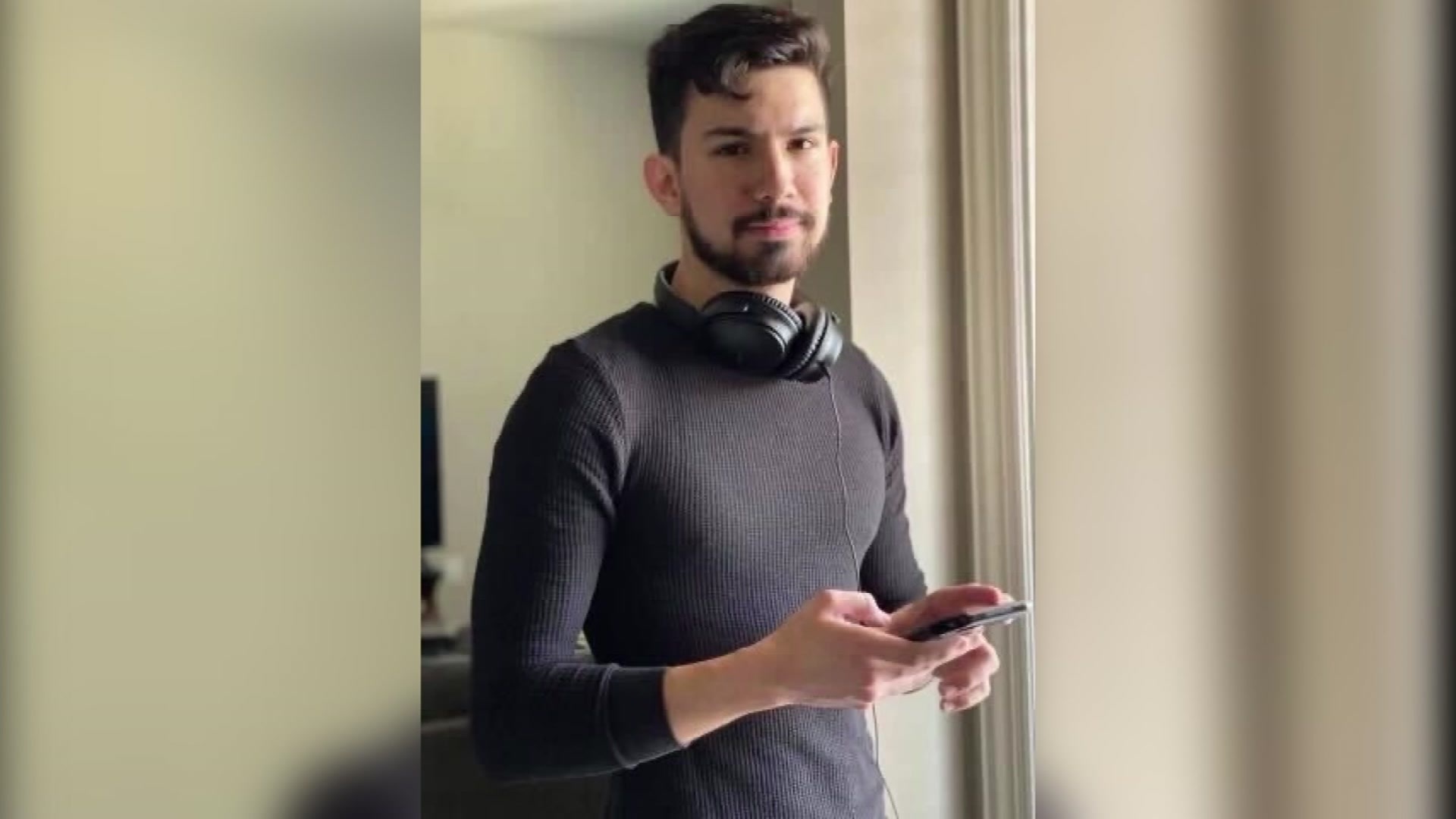
During the coronavirus pandemic, improvisation is more than a spontaneous musical activity. It is a necessity. The Fort Worth Symphony Orchestra moved its symphonic series from Bass Hall to Will Rogers Memorial Auditorium after Performing Arts Fort Worth (PAFW) announced Bass Hall would remain closed for the remainder of 2020.
The Fort Worth Symphony Orchestra learned of PAFW’s decision to keep Bass Hall closed on Sept. 4, only two weeks before the orchestra’s symphonic series was scheduled to begin. “That was a surprise, but we worked all Labor Day weekend to secure Will Rogers Auditorium here in Fort Worth and also move about 2,000 subscription tickets from one seating configuration in Bass Hall to a new one in Will Rogers,” Keith Cerny, the orchestra’s President and CEO, said.
By taking quick action, the orchestra began its symphonic series as scheduled on Sept. 18 and it is looking forward to its next concert series featuring Beethoven Symphony No. 6., beginning Oct. 16. “Many of these international caliber musicians have not performed in six or seven months and that’s really hard on them,” Cerny said. “Our strategy has been completely focused around how to reopen safely as a way to give our extraordinary musicians a chance to perform and to preserve that donor and patron loyalty.”

When the pandemic began in March, the orchestra’s immediate priority was to support the orchestra’s human infrastructure. “We kept going with full pay and full benefits for musicians and staff through that period thanks to some incredible generosity by our donors and also the Payroll Protection Program (PPP) from the Small Business Administration,” Cerny said.
The orchestra received a PPP loan of just under $1.6 million. “That was enormously important to us. We closed out the 2019 – 2020 season on July 31 with a pre-audit loss of just under $200,000. On a $13.5 million or so budget, we’re delighted with that result, given everything,” Cerny said.
During the summer, the orchestra established protocols for its musicians and audiences. Musicians are spread out at least six feet onstage, more for woodwinds and brass. The strings sections wear masks and there are bell covers for woodwinds and brass. Acrylic screens control air flow and there are frequent temperature checks. Musicians and staff are also tested for the virus.
“We’ve actually put in place our own COVID drive-thru testing line, which is something I’m especially proud of. Before the first two weekends of performances, we’ve tested all of the musicians, stage crew and staff, so far 200 people, and all came back negative,” Cerny said.

Audiences can expect assigned entry times with temperature checks, mandatory mask wearing during the performance and distanced seating in the auditorium. The concerts are performed with no intermission. The orchestra has moved its concert playbills to a digital format and implemented "touchless" approaches to ticketing.
Local
The latest news from around North Texas.
The symphonic series joins the orchestra’s pops series at Will Rogers and the orchestra is adapting to its temporary home. During the summer, an extension was added to the stage to accommodate a social distanced orchestra and a second extension is being considered. Will Rogers Memorial Auditorium is larger than Bass Hall by 800 seats, allowing the orchestra to seat more people at a reduced capacity.
Cerny is pleased with how the orchestra sounds in the auditorium. “The acoustics are actually surprisingly good at the back of even the upper level. The sound carries really well in that theater, even without amplification,” Cerny said.
The orchestra is in a transitional artistic phase with Miguel Harth-Bedoya stepping down as Music Director earlier this year. Before the pandemic, a search committee began looking for his successor, but that committee’s work is currently paused.
“That being said, we have some really extraordinary guest conductors coming this year and we hope out of that group plus some of the folks we worked with last year, that there may be that one that we all say, ‘Yes, this is absolutely right for us,’” Cerny said.

When the orchestra does find the right fit, Cerny anticipates the new music director will continue the flexible and cooperative practices developed during the pandemic. “What I hope to preserve as the pandemic eventually does ease is the spirit of collaboration with the musicians and our board and this community to really embrace how important the Fort Worth Symphony Orchestra is and how much we rely on the community for their support as audience members, as parents of students, as donors and as board members,” Cerny said.
Learn more: https://fwsymphony.org/



